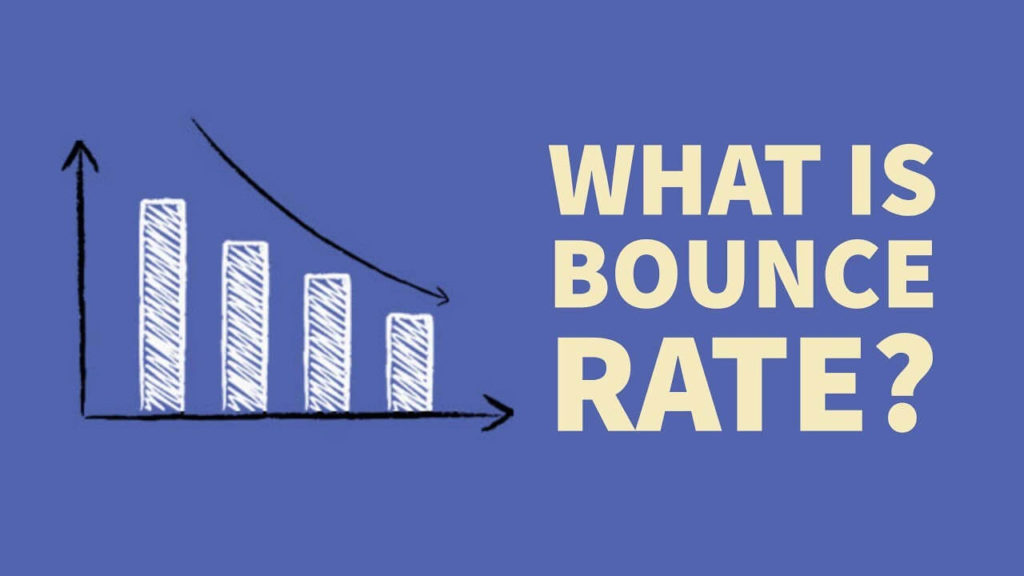If you’re a site owner who’s suffering from low search traffic and struggling to get leads, chances are your bounce rate is too high. In layman terms, it means that visitors are leaving your site without spending enough time and robbing you the opportunity to convert them.
There are countless reasons why you might have a high bounce rate. In this article, we’re going to discuss the reasons and solutions so that you can develop a content strategy that will boost your conversion rates and generate consistent search traffic.
But before we do all that you need to understand ‘Bounce Rate’ in detail.
‘Bounce Rate’ – Explained in Detail

By now you’ve already noticed that your site metric will always show the bounce rate as a percentage. This represents the number of unique people/visitor who had landed on your website and left without browsing a second page.
This essentially means you’ve failed to convert those leads to stay and act on your call to action.
There are a few ways your site will register a visitor ‘bounced’.
- When a visitor clicks an outbound link that takes them to another website,
- Closing the window with your site loaded,
- Session time out (usually caused by web hosting errors),
- Pressing the back button and leaving your site,
- Typing a new URL/address and browsing elsewhere.
While different industries have variable benchmarks according to their standards there is one general rule of thumb that most site owners follow.
30% – 50% = Very Good.
50% – 70% = Average.
70% – 80% = Poor.
80% – 100% = Critical.
A few common reasons for high bounce rates include poor site navigation, messy design, poor UI and usability, slow site load time and lack of clear call-to-action.
Let’s discuss these problems in detail and how to deal with them. By following these steps you too can reduce your bounce rate and improve your conversions.
1. Improve Sitewide User Experience

Your site should be friendly and easy to navigate. Not only that, but it should also be aesthetically pleasing to the user. Buggy and difficult to interact sites will drop your visitor rate like gravity and hike up your site bounce rates.
Not to mention users might find your site spammy!
Remember to focus and improve your site so that it functions equally across all platforms – mobile, PC and tablets. Observe and improve to maximize user-friendliness all across the site.
Most notably, the home button, category menu, headers, footers containing the about and contact information should be easily visible and accessible. Same goes to any policy, disclosure, and call to action buttons.
If possible highlight those buttons so that they attract attention to your visitors.
Developing a beautiful site with friendly UI will make any user stop and browse your site. That way your bounce rate will drop and chances to convert any potential leads will grow.
2. A Clear Call to Action Button
We previously mentioned how a ‘Call to Action’ button should always be highlighted on your site. You may ask why?
Let me explain this in simple terms – If you have a site that provides a service and the user/visitor can’t find the button to hire you, the entire point of that site becomes moot.
A service-oriented site usually has a clear section that calls a user to ‘take action’. E.g. hire or pay for said service. Usually, you’ll find something like “Get a Free Trial” or “Call for a Booking”, even “Select Package A” etc.
Same goes if you’re selling a product.
Optimize the area so that it’s clearly visible – even from phones! The section should clearly say what you’re selling (product or service) in detail. Be honest and very clear – confusing and ambiguous will lead to a bad experience and lead to higher bounce rates.
3. Improve Your Site Speed
Let us be honest, no one likes a slow website. If your website or landing page takes forever to load, chances are visitors will simply close that tab and move on to a different site.
Not only your bounce rate will go up, but your potential clients will move on to your competitors (who has a faster loading website!). In the end, you’ll lose more than just business.
Now one of the best ways to improve your site speed is to get a faster hosting service. There are countless hosting providers that provide various benefits that improve faster load speeds.
A wise choice would be to read verified reviews of popular hosting providers and choose one that suits your budget and needs.
In addition to a faster hosting, invest in a reliable CDN or Content Delivery Network so that your site will load up quickly no matter where the user is from in the world.
Optimizing your images and adding better caching also works wonders in boosting site speed. Remember, a 1-second site load delay might cost you thousands of dollars in a year.
4. Get Engaging and Interactive Content

In the beginning, we mentioned how a beautifully crafted site will attract the attention of any user. Now we’re going to show you how. The answer is simple…!
Content.
Not just any content, but one that’s interactive and engages the audience.
First off, every content that you post in your site should be of value. Improve their readability by breaking down all those blocky large paragraphs into small ones.
You can add appropriate hi-resolution images and videos in between content to spice up those boring texts.
Following a planned content strategy with polls, quizzes and commenting will not only bring in more visitors but keep your existing ones from leaving.
5. Stop Users From Leaving
Yes, you read this right. There are various ways to stop users from leaving your landing page. With creative coding and making use of various plug-ins, you can easily deduce the intent of exiting visitors and try to stop them.
With a simple Pop-UP!
Now, it can’t be just a simple pop-up. Really think about what you’re going to put there as it’s the final barrier that might convert ‘just another visitor’ to a client or a customer.
There are obviously proven methods – most commonly, promo codes, discounts, free-ebooks, etc can pop-up to delay the visitor.
But get creative … because you know your site best. Think about how you can keep them leaving. Maybe a subscription box?
There is a saying –
If you can’t stop them from leaving, at least turn them into a subscriber.
That way you can e-mail them and convert them at a later date. You’ll be surprised how effective this strategy works.
Final Thoughts
In reality, there are many more ways one can reduce site bounce rates but these are the ones we felt is most effective. However, we should also mention that A/B Testing of landing pages, customer testimonials and having credible reviews to your site also reduces bounce rates significantly.
Try out the 5 points we discussed above and see the results yourself. Also, don’t forget to leave us a comment on how it helped your site.
Last but not least, do consider being a subscriber to this awesome site to get the latest tech related news.
You may also like to read: 8 Reasons Why Responsive Web Design Will Increase Profit for your Business
Featured Image Credits: Aman Kharbanda